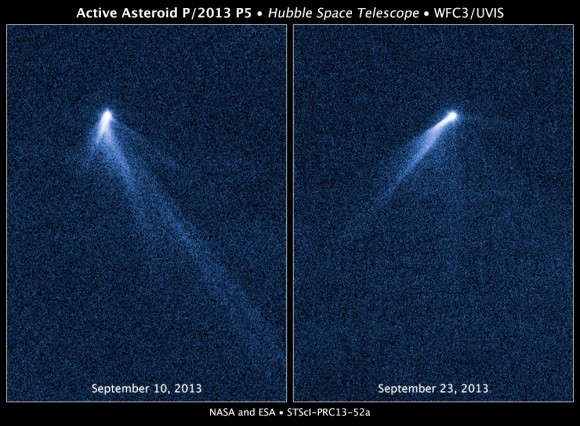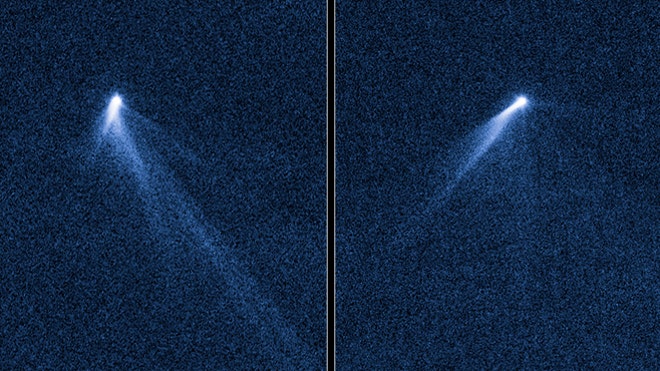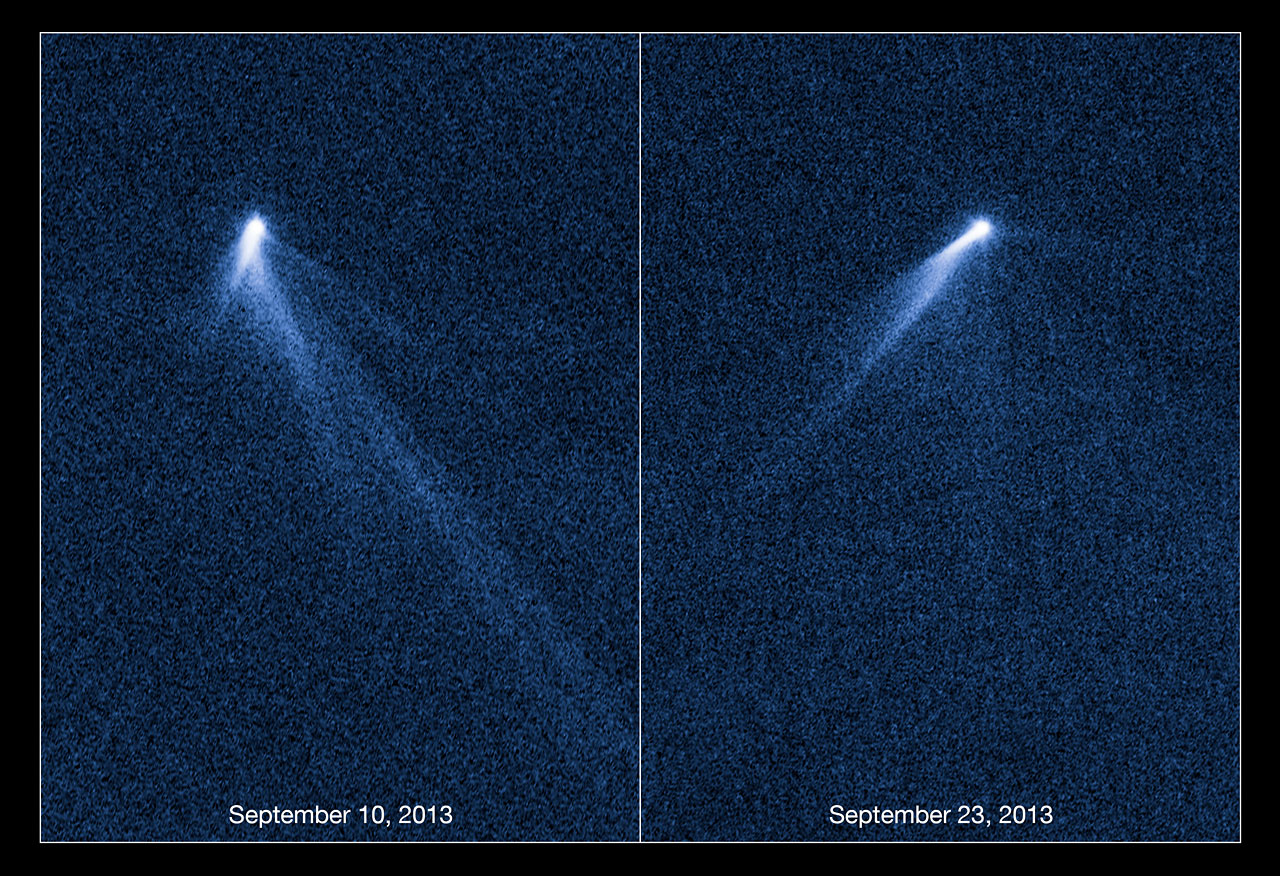Object: spouting asteroid P/2013 P5
Size: 427 metres wide
Prognosis: near death
[hr][/hr]This six-tailed asteroid is spinning in its grave
(Credit: NASA, ESA, and D. Jewitt (UCLA),
J. Agarwal (Max Planck Institute for Solar System Research),
H. Weaver (Johns Hopkins University Applied Physics Laboratory),
M. Mutchler (STScI), and S. Larson (University of Arizona))
This freakish asteroid may be spinning in its grave. Unlike its rocky siblings, asteroid P/2013 P5 has a record six tails of dust streaming from its body. It also whirls about on its axis, spewing material like a rotating lawn sprinkler. This suggests the oddball object is spinning so fast it is falling apart, which could help us better understand the life cycles of asteroids.
Until recently, comets were the only space rocks thought to have tails. Born in the frigid outer reaches of the solar system, comets are made from ice and dust. Their famous tails form when they swing close enough to the sun that the ice turns directly to gas, creating haloes of material that get swept back in one direction by radiation pressure from the sun.
Most asteroids occupy a belt between the orbits of Mars and Jupiter and are made primarily of rock without much ice. Since 2006, though,
David Jewitt of the University of California, Los Angeles, and colleagues have found a number of asteroids in this belt
masquerading as comets.
"These are bodies that are asteroids as determined by their orbit – they're sitting there in the asteroid belt, completely different from the orbits of comets, so there's no confusing them," says Jewitt. "But they look like comets. They're rocks and, weirdly, they're ejecting dust. The question is why."
Telltale spin
P/2013 P5 was first observed by a telescope in Hawaii on 18 August as a fuzzy-looking object in the asteroid belt. When Jewitt's team pointed the Hubble Space Telescope at it on 10 September, the fuzz resolved into six distinct tails. "That must be a record," says Jewitt. "I don't even know of regular comets that do that."
In most previous cases, tailed asteroids had survived a collision with another space rock, and the tails were
clouds of dust kicked up by the impact. Others had some remnant ice trapped beneath their rocky surface that escaped to space, forming faint tails. But P/2013 P5 is too close to the sun for any ice to survive, and the odds of all six tails being the result of separate impacts are vanishingly small.
"Space is big, and collisions are rare. You can fly right through the asteroid belt and never see an asteroid, never get close enough to one to take a picture of it, never even get hit by a piece of dust," says Jewitt. "It's not an impact, I would bet a huge amount of money on that."
A clue to the tails' origins came almost two weeks later, when the team again observed the asteroid with Hubble. The tails were all in different positions, as if the entire structure had spun like a wheel. "That freaked us out big time," says Jewitt. "But we can explain it if the dust was emitted on six separate occasions."
Bucket-loads to come?
The most likely explanation is that the rock is falling apart, the team says. They think
pressure from sunlight could have nudged the asteroid so that it is spinning so fast gravity can barely hold it together. Jewitt's colleagues modelled the spinning asteroid and showed that a series of events, like mini avalanches, could have been triggered by the break-up and ejected dust over the past five months, forming the tails one by one.
"Maybe eventually something more dramatic will happen," says Jewitt. "It could split and make a binary. That's something to look forward to."
If this model is right, it could help solve a mystery about how asteroids die. Over millions of years, bigger rocks can collide and grind each other down into pieces, some of which get ejected from the asteroid belt and sent
careening through the solar system. But it is unlikely that the smaller asteroids that remain in the belt will collide again. P/2013 P5 suggests that these asteroids can instead spin themselves into dust.
Although the six-tailed beast is a lone oddity for now, the team is confident that there are more multi-tailed asteroids out there that would back up the theory. "With anything in astronomy, first one example is found and then you find a bucket-load more," says Jewitt. "That's got to be the future of this field too."




